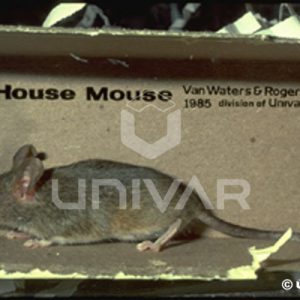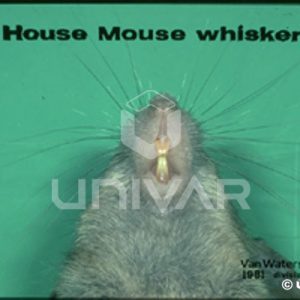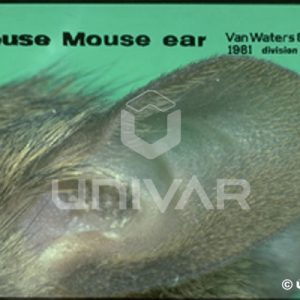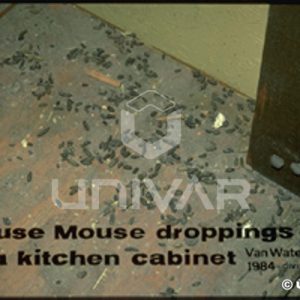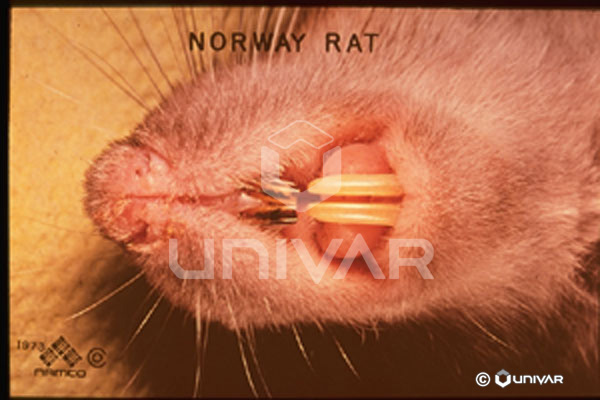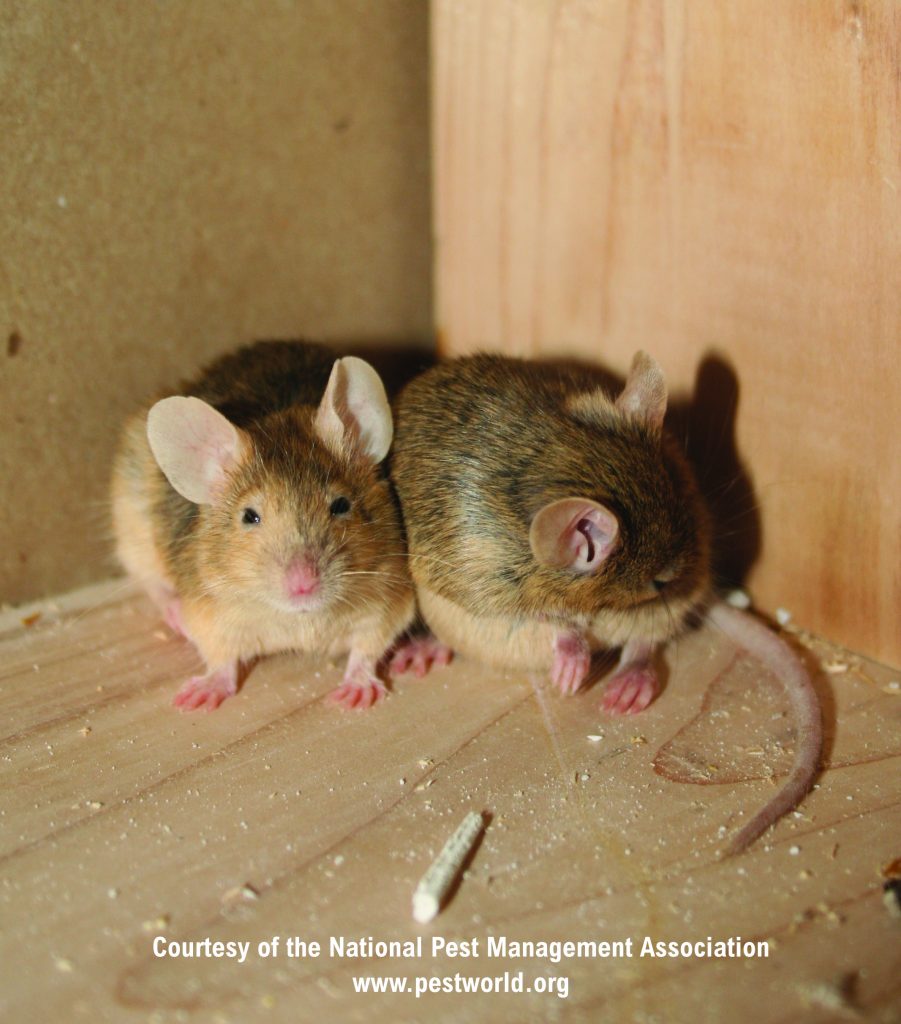
HOUSE MOUSE
Common Name: Rodent – House mouse
Latin Name: Mus musculus
Common Family Name: Rats and mice
Latin Family Name: Muridae
Other Names: Field mouse
Origin: This species originated in Eastern Asia in arid grasslands, allowing it to evolve the ability to survive without needing frequent water. It now occurs throughout the world.
Biology: A prolific breeder, the House Mouse is sexually mature at 2 months old, has a gestation period of only 3 weeks, and averages 5 to 8 young per litter, but potentially up to 15. Each female may give birth to 8 litters. The life span can be from 2 to 3 years. The House Mouse is a nibbler, consuming small quantities of food at many feedings. They are “curious”, and tend to investigate new objects that are placed in their environment. Favored foods may be grains, dried fruits, nuts, and sweet materials. They are known reservoirs of diseases such as rickettsial pox (mites), typhus (fleas), and filth problems with Salmonella, tapeworm, roundworm, and other parasites.
Identification: Adults remain small, less than 7 inches long from the tip of the nose to the tip of the tail. They have hairless, scaly tails that separate them from meadow or deer mice, and ears relatively bare of hairs. A young rat looks similar to the House Mouse, but the rat has feet and eyes that are disproportionately large in comparison with its head and body.
Characteristics Important in Control: The full complement of traps and baits are effective on mice. Exclusion should consider closing any openings as wide as ¼ inch, along with the elimination of any harborage sites that are not needed, such as waste piles, packing boxes, wood piles, or heavy outside vegetation. Like other domestic rodents, they prefer to remain against vertical surfaces, in contact with the “guard hairs” on their body, and control measures should be placed against these pathways.
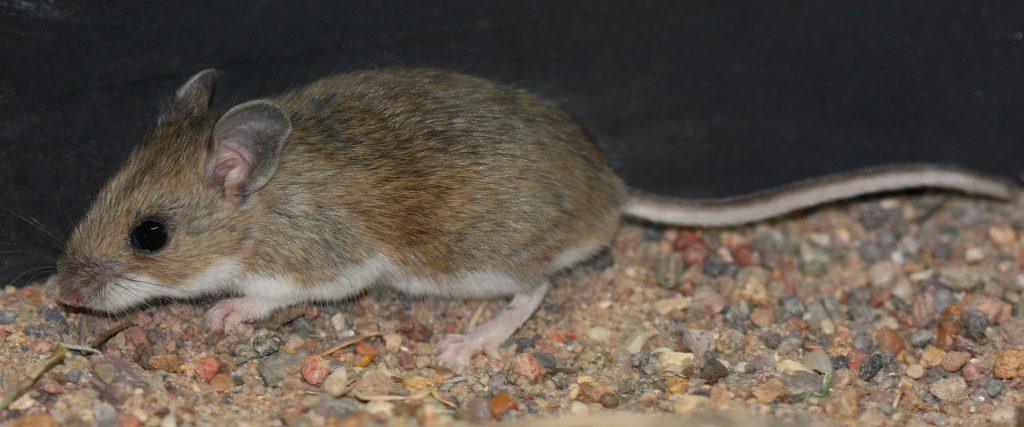
DEER MOUSE
Common Name: Rodent – White-footed mouse
Latin Name: Peromyscus
Common Family Name: Cricetid rodents
Latin Family Name: Cricetidae
Other Names: Deer mouse
Origin: 55 different species of this genus are found in the U.S. and are native animals. They have gained notoriety in recent years due to the associations with Hantavirus (deer mice) and Lyme Disease (white-footed mouse), and 2 distinct species are generally given the two common names. Deer mice (P. maniculatus) are found throughout the U.S. except for the southeast, and the White-footed Mouse (P. leucopus) is found throughout the U.S. except for the West Coast states.
Biology: Normally residents of outdoor habitats these mice also commonly invade structures, particularly in cold weather and at times when human residents are not present. This association with humans brings them close enough that their parasites and their waste excretions are contacted by humans, initiating the potential for transmission of the associated diseases. These mice breed rapidly, with 3 to 4 litters per year and up to 6 young per litter, and most of the breeding is done in the spring. Peromyscus species generally live no more than 2 years in a natural setting. They are nocturnal, and nests are built in many types of hidden places, such as shallow ground burrows, under logs, in hollow stumps, or in hidden places in and around structures.
Identification: With 55 species in the genus the colors and features vary widely. However, in general, they are distinguished by the distinctly bi-colored body, with the body, feet, and tail being brown above and white below. The tail is only slightly hairy, so these can be confused with the House Mouse except for the bi-colored appearance, and the fact that the eyes, ears, and body are slightly larger than the house mouse.
Characteristics Important in Control: In outdoor habitats the white-footed and deer mice are not major problems, except for their potential as disease vectors and reservoirs. Control measures usually are centered around exclusion from structures and would be similar to those for the House Mouse – sealing of entry points greater than a quarter inch in diameter, ensuring vent openings are screened, and reduction of food and harborage around the structure.
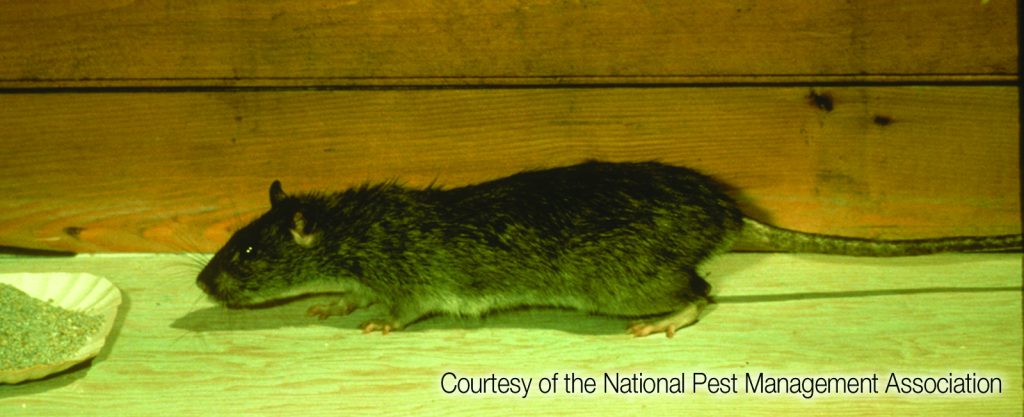
NORWAY RAT
Common Name: Rodent – Norway Rat
Latin Name: Rattus norvegicus
Common Family Name: Rats and Mice
Latin Family Name: Muridae
Other Names: Brown rat, ship rat, wharf rat, sewer rat, gray rat, barn rat, burrowing rat, water rat, common rat, house rat, migratory rat, wander-rat
Origin: Evolved in Central Asia, but reached Europe in the 1700s, the United States later that century, and now it is found throughout the world. It is a rodent of cooler climates, but now also infests many tropical environments as well, primarily in the seaport areas.
Biology: This rat is commonly sold as a “pet rat”, and has been bred for white coloration as “lab rats” as well, leading to the occurrence of white and brown-marked races. It is primarily a ground dweller, although it can climb very well, and prefers to reside in burrows. It swims very well and often lives in sewers and other underground water systems. It is primarily a nocturnal animal and will restrict its range of movement only to that which is needed to find food and water, perhaps only 20 or 30 from home. Norway Rats are omnivores and opportunistic feeders, feeding on any natural or human foods available. They are neophobic and may avoid new objects placed in their environment for some time. A normal life expectancy for them is one year or less, although when cared for they may live several years. The gestation period of the female is 22 days, litters average 8 to 9 pups, and she may have several litters in one year. Damage from gnawing can be extensive, as they chew on pipes of plastic or metal, wires, wood, or furnishings and walls, and commonly bite humans. While not the primary reservoir of bubonic plague, they have the potential to spread this disease, along with several others as well as filth infections.
Identification: Adult rats are large and robust, being up to 16 inches from nose to tip of tail. Their tail length is shorter than their body length, and it is scaly and almost without hairs. Colors range from white to brown to mottled, or blackish gray, reddish brown, and other variations. In relation to its head, it has a blunt nose, small eyes, and small ears.
Characteristics Important in Control: Habitat modification to eliminate harborage sites is effective, along with proper building maintenance to exclude their entry. Elimination of available interior and exterior food and water supplies is needed. Burrows may be treated by fumigation in some circumstances, and the use of traps and baiting are highly effective. The shyness these rats exhibit toward new objects can affect their response to bait boxes and traps. Glue trays may not be highly effective due to the strength of this species, and its ability to pull free from the glue. Like other domestic rodents, they prefer to remain against vertical surfaces, in contact with the “guard hairs” on their body, and control measures should be placed against these pathways.
